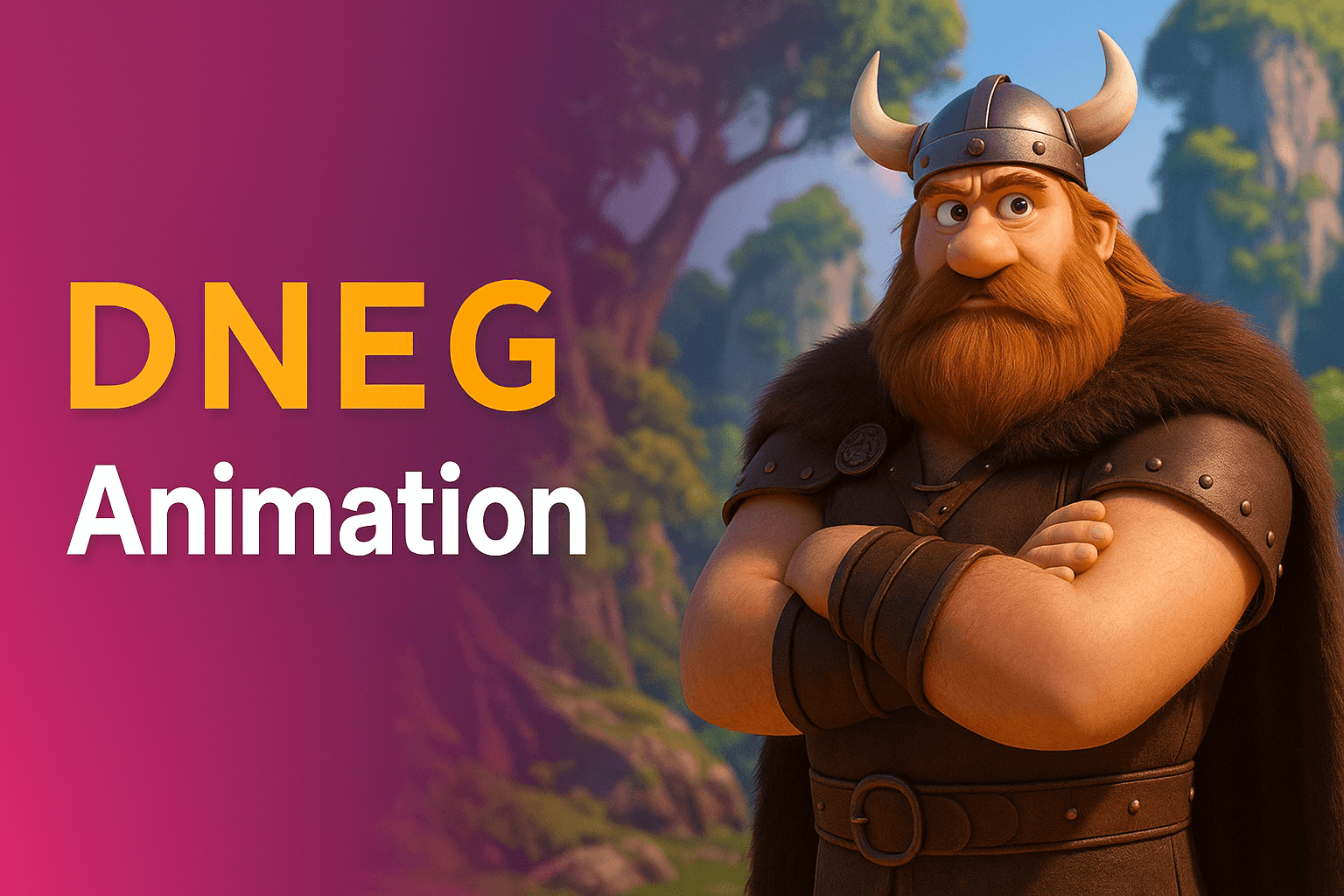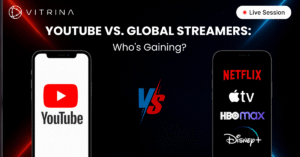DNEG Animation: A Strategic Overview for M&E Executives

Introduction
In the rapidly evolving world of media and entertainment, the animation sector has become a major driver of growth and a key strategic pillar for studios and streamers. The lines between visual effects (VFX) and animation are increasingly blurred, and companies with a foothold in both are uniquely positioned.
However, for a head of content acquisition or a co-production executive, the challenge is clear:
how do you get a holistic view of a company’s market footprint, from its deal flow and key personnel to its complete project slate? Without a centralized source of verified data, this critical intelligence is often fragmented, leading to missed opportunities and inefficient deal-making.
This article provides a strategic overview of DNEG Animation’s business model and how a data-driven platform can empower you to move from an incomplete perspective to a full-picture analysis of a studio’s capabilities and project pipeline.
Key Takeaways
| Core Challenge | Fragmented data makes it difficult to assess a company like DNEG Animation’s full project slate, its key decision-makers, and its role in the global supply chain. |
| Strategic Solution | Employ a data-first approach to analyze a studio’s deal track record, co-production partners, and key executive relationships to identify new opportunities. |
| Vitrina’s Role | Vitrina’s platform provides a centralized, global view of the entertainment supply chain, tracking projects and linking them to companies and executives to enable smarter, data-driven decisions. |
DNEG Animation: From VFX Powerhouse to Feature Animation Leader
DNEG, the company formerly known as Double Negative, has established itself as an industry titan, particularly in the realm of visual effects. With a history spanning over two decades, the studio has garnered numerous accolades, including multiple Academy Awards and BAFTAs for its VFX work on major films like Inception, Dune, and Tenet.
However, a key part of DNEG’s strategic evolution has been the expansion of its animation division, DNEG Animation. This division provides animation services for both feature films and episodic projects, often collaborating with IP creators and filmmakers.
This expansion into full-scale feature animation marks a strategic shift from a purely service-based model to one that also encompasses co-production and content creation. The division’s credits include projects such as the Emmy-nominated Entergalactic and the Oscar-nominated Nimona, both for Netflix.
They also partnered with Locksmith Animation on Ron’s Gone Wrong and are in production on future projects like The Garfield Movie with Alcon Entertainment and That Christmas, another collaboration with Locksmith Animation. This diversification indicates a clear intent to become a full-service creative partner, not just a vendor.
For a business development or content acquisition team, understanding this strategic pivot is critical. This is no longer just a company to approach for a specific VFX sequence; it is a potential co-production partner, a source of original IP, and a competitor in the feature animation space. The challenge lies in tracking the full scope of their projects and identifying the right decision-makers to initiate a dialogue. Manually searching for this information is a time-consuming and often fruitless effort, as project details and key personnel frequently change.
Evaluating the Strategic Landscape of DNEG Animation
To fully grasp the strategic positioning of DNEG Animation, an executive must look beyond the marquee film titles and consider their broader ecosystem. The landscape is intensely competitive, with a mix of established industry leaders and rising players. Competitors include studios like Framestore, Industrial Light & Magic (ILM), and Weta Digital, which also have a strong presence in both VFX and animation. The ability to accurately map DNEG’s competitive footprint requires a nuanced understanding of their deals, partnerships, and global reach.
In my analysis, a critical differentiator for a company like DNEG is its global operational footprint. DNEG has studios in North America (Los Angeles, Montréal, Toronto, and Vancouver), Europe (London), and Asia (Bangalore, Chennai, and Mumbai).
This global presence allows them to scale production and tap into a diverse talent pool, a significant advantage in securing complex, large-scale projects. However, for a production financier or a co-production executive, this also creates complexity. You need a way to track not just the company itself but its collaborators, financiers, and the projects it’s working on in each region.
The strategic value of DNEG is not just in its creative output but in its deep relationships with major content creators. Their long-standing partnerships with visionary filmmakers like Christopher Nolan and their work with major studios and streamers like Netflix and Warner Bros. Discovery underscore their position as a trusted partner. A senior executive’s primary goal is to identify and connect with the right people at these companies.
However, navigating the intricate web of these relationships and finding verified contacts can be a major bottleneck for sales and business development teams. This is a fundamental problem that traditional industry directories or manual research cannot solve at scale.
To truly understand DNEG’s pipeline and where it might intersect with your own, you must have visibility into projects from their earliest stages—from development through post-production. Knowing which projects are in pre-buy, which are seeking co-production partners, or which are in need of specific post-production services is the difference between being reactive and proactive.
For an example of how this kind of intelligence is applied, see our article on How WBD Sourced Animation Partners in APAC and LATAM. Similarly, you can learn more about how competitive analysis can drive strategy in our article Uncovering Competitor Project Slates.
How Data-Driven Intelligence Reframes Your DNEG Animation Strategy
The manual, ad-hoc approach to partner discovery is no longer viable for sophisticated M&E companies. A data-driven platform re-engineers this process by providing a centralized, structured, and continuously updated view of the entire entertainment supply chain. With this type of intelligence, you can conduct a strategic analysis of a company like DNEG Animation with algorithmic precision.
- Project Tracker: A platform with a global Project Tracker provides a real-time view of DNEG Animation’s entire slate, from projects in early development to those in post-production and release. This allows you to identify potential co-production or distribution opportunities before they are publicly announced, giving you a crucial first-mover advantage.
- Deep Profiling & Metadata: Beyond a simple list of projects, the platform provides deep metadata linking projects, companies, and executives. You can see which financiers are backing which projects, who the key co-producers are, and which service vendors are being utilized. This intelligence helps you map the entire ecosystem surrounding DNEG’s projects, revealing hidden opportunities for collaboration.
- Executive & Contact Verification: The most significant barrier to effective business development is often finding the correct person to contact. A platform that provides verified contact information for over 3 million decision-makers and functional heads in the industry, including those tagged as “Financier” or “Exec Producer,” eliminates this guesswork. It allows you to build hyper-targeted outreach campaigns with confidence.
This is the difference between simply knowing that DNEG Animation worked on Nimona and understanding that their key animation executives have a proven track record with Netflix, and that a specific producer you are trying to reach is attached to a similar project currently in development in the Latin American market.
Conclusion: The Mandate for Data in the M&E Supply Chain
The rise of DNEG Animation is a clear example of the M&E industry’s continued evolution. For an executive, staying ahead of such shifts requires more than surface-level knowledge. It demands a sophisticated, data-driven approach to market intelligence and partner discovery.
The days of relying on an internal network or fragmented, manual research are over. The strategic imperative is to access a single source of truth that connects projects to companies and people, providing a holistic and actionable view of the global supply chain.
To compete effectively and secure the most valuable partnerships, you need a system that acts as a force multiplier for your business development efforts. A platform like Vitrina provides this by automating the discovery process and delivering real-time, executive-grade insights.
It is the mission-critical tool for moving beyond a simple name like DNEG Animation and into a deep, contextual understanding of their strategic value. The future of deal-making is not about who you know—it’s about how you know who to connect with, and when. Start your strategic discovery today.
Frequently Asked Questions
The platform provides partner matching by track record and project metadata. You can identify co-production opportunities by mapping projects by financing stage, genre, scale, and region.
Yes, Vitrina has strong coverage in emerging and niche markets, including Africa, Latin America, and Southeast Asia. This includes tracking regional and niche players who may not have a strong public online presence.
Yes, Vitrina offers native integrations for both HubSpot and Salesforce, allowing you to fuel your sales pipeline with verified projects, companies, and contact lists directly.















































